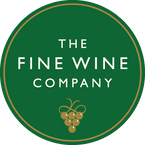Picking up a bottle of Sauvignon Blanc and not sure if it’s dry or sweet? It’s a common question. Whether you’re new to the world of wine or a seasoned enthusiast, choosing the right wine can sometimes be tricky.
In this guide, we’ll explore whether Sauvignon Blanc is dry or sweet, what influences its taste, and how to choose the perfect bottle for your next meal or gathering.
What is Sauvignon Blanc?
Sauvignon Blanc is one of the most popular and widely enjoyed white wines in the world. Known for its vibrant acidity and refreshing qualities, this grape is grown in wine regions across the globe, including France, New Zealand, California, and South Africa. It is often characterized by its crisp, herbaceous flavor profile with hints of citrus, grass, and green apple.
But the question many wine drinkers ask is: Is Sauvignon Blanc dry or sweet?
Let’s break it down.
The Taste of Sauvignon Blanc: Dry or Sweet?
Dry Characteristics of Sauvignon Blanc
The majority of sauvignon blanc wines are considered dry. This means they have little to no residual sugar after fermentation, making them crisp and refreshing with a clean finish. The dryness of the wine is one of the reasons it pairs so well with a wide variety of foods, from seafood to fresh salads.
So, if you’re looking for a white wine that doesn’t lean towards the sweet side, Sauvignon Blanc is a great choice. The wine's naturally high acidity gives it a sharpness that is often perceived as dryness.
Sweet Sauvignon Blanc Variants

While most Sauvignon Blanc wines are dry, there are exceptions. In some regions, such as the Loire Valley in France, you might find a slightly sweeter version of this wine. These wines have higher levels of residual sugar and can be more fruit-forward, often with flavors like ripe peach, honey, or tropical fruits.
That being said, the sweetness in these wines is still relatively subtle compared to other varieties like Moscato or Riesling. If you're someone who enjoys a slightly sweeter, more approachable wine, you may want to seek out a Sauvignon Blanc that has been made with higher residual sugar or one that’s labeled as "off-dry."
What Affects the Dryness or Sweetness of Sauvignon Blanc?
The taste of Sauvignon Blanc can vary widely depending on several factors, such as the region where the grapes are grown, the climate, and the winemaking techniques used.
1. Climate
• Cool climates: In cooler regions, like the Loire Valley in France or Marlborough in New Zealand, Sauvignon Blanc wines tend to be leaner and drier. The cool temperatures allow the grapes to retain their high acidity, leading to a crisp, clean wine.
• Warmer climates: In warmer regions, such as California or South Africa, Sauvignon Blanc grapes may have higher sugar levels, which can result in a wine with a slightly rounder, fruitier flavor. These wines can sometimes have a slightly sweeter taste, though they are still generally considered dry compared to other varieties.
2. Winemaking Techniques
Winemakers can also influence the sweetness or dryness of Sauvignon Blanc. Some may choose to ferment the wine in stainless steel tanks, which preserves its crisp, clean profile. Others may age the wine in oak barrels, which can add complexity and body, sometimes resulting in a richer, slightly sweeter taste.
3. The Grape Itself
Sauvignon Blanc is naturally a grape that produces wines with high acidity, which is one reason why it tends to taste dry. However, certain producers may decide to leave a small amount of residual sugar to balance out the acidity, creating a slightly sweeter wine.
How to Choose the Right Sauvignon Blanc for You

If you're wondering where to buy Sauvignon Blanc or how to pick the right bottle, here are some tips to help you navigate the world of Sauvignon Blanc wines.
1. Check the Region
If you prefer dry wines, look for Sauvignon Blanc from regions known for their crisp, lean styles. Marlborough in New Zealand and Sancerre in the Loire Valley are two of the best-known areas producing dry Sauvignon Blanc wines.
If you're looking for a slightly sweeter style, try a bottle from California or South Africa, where the warmer climates can lead to rounder, fruitier wines.
2. Look for Wine Labels
Many wineries include tasting notes on the back of the bottle, which can give you a good idea of what to expect. Wines with notes like "citrus," "grass," or "herbaceous" are typically dry. If you see terms like "ripe fruit," "tropical," or "round," these may indicate a sweeter style.
3. Experiment with Pairings
Sauvignon Blanc’s dry nature makes it a versatile food wine. Pair it with dishes like goat cheese, seafood, or a fresh vegetable salad to accentuate its crisp acidity. On the other hand, if you want a slightly sweeter option, go for a bottle from a warmer climate and enjoy it with spicy Asian cuisine or a fruit salad.
How to Properly Store Sauvignon Blanc
To keep your Sauvignon Blanc fresh and vibrant, proper storage is essential. Here are some tips to make sure your wine stays in top condition:
• Store in a cool, dark place: A wine fridge is ideal, but a cool cellar or cupboard will work too.
• Refrigerate after opening: Once you’ve opened your bottle, store it in the fridge to maintain its freshness.
• Seal it properly: Use a wine stopper or reseal the cork to minimize exposure to oxygen.
If you’d like more tips on wine storage, check out our post on how long open wine lasts and storage tips for freshness.
Frequently Asked Questions (FAQs) About Sauvignon Blanc
Q: Is Sauvignon Blanc a good wine for beginners?
A: Yes, Sauvignon Blanc is often recommended for beginners due to its crisp and refreshing nature. It’s easy to drink, with a range of flavors that can appeal to a wide variety of tastes.
Q: Is Sauvignon Blanc better chilled?
A: Absolutely! Sauvignon Blanc is best served chilled, typically between 45-50°F (7-10°C), to enhance its fresh and zesty flavors.
Q: Can I age Sauvignon Blanc?
A: Most Sauvignon Blanc wines are made to be enjoyed young and fresh. However, some higher-quality versions, especially those from the Loire Valley, can age well for a few years.
Q: How do I serve Sauvignon Blanc?
A: Serve Sauvignon Blanc in a standard white wine glass to allow its crisp aromas to shine through. Don’t forget to chill it beforehand!
Ready to Try the Best Sauvignon Blanc Wines?
Whether you’re looking to buy Sauvignon Blanc for a casual evening or to stock your wine rack, there’s a perfect bottle waiting for you. If you're in search of high-quality, handcrafted wines, look no further than The Fine Wine Company.
We specialize in offering a curated selection of boutique wines from around the world, including some of the best Sauvignon Blanc options.
Browse our selection and buy Sauvignon Blanc, we offer wines by the case, ensuring you can enjoy your favorites on demand.



